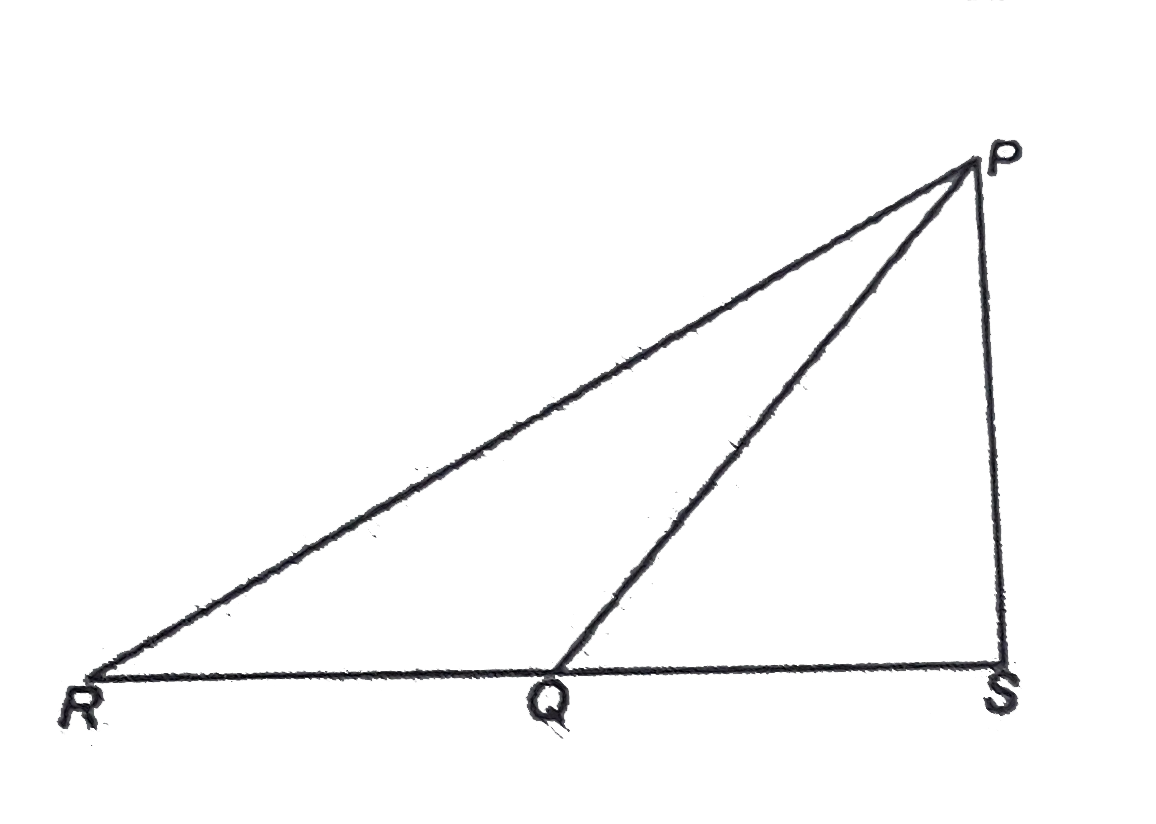Let △ABC be a given triangle. If ∣∣∣−−→BA−t−−→BC∣∣∣≥∣∣∣−−→AC∣∣∣ for any t∈R,then △ABC is
A
Equilateral
B
Right angled
C
Isosceles
D
None of these
Text Solution
The correct Answer is:B
∣∣∣−−→BA∣∣∣2+t2∣∣∣−−→BC∣∣∣2−2−−→BA.−−→BC.t−∣∣∣−−→AC∣∣∣2≥0∀t∈R
Discrimiant of the quadratic equation ≤0
⇒4(−−→BA.−−→BC)2−4∣∣∣−−→BC∣∣∣2∣∣∣−−→BA∣∣∣2+4∣∣∣−−→BC∣∣∣2∣∣∣−−→AC∣∣∣2≤0
Using (−−→BA.−−→BC)2−∣∣∣−−→BC∣∣∣2∣∣∣−−→BA∣∣∣2
=−∣∣∣−−→BA×−−→BC∣∣∣2
⇒=−∣∣∣−−→CA×−−→BC∣∣∣2
But ∣∣∣−−→AC×−−→BC∣∣∣=∣∣∣−−→AC∣∣∣∣∣∣−−→BC∣∣∣sinC
⇒sin2C≥1
⇒sinC=+1⇒∠C=π/2
|
Topper's Solved these Questions
Similar Questions
Knowledge Check
Let ΔABC be a given triangle, if |BA−tBC|≥|AC| for any t∈R, then ΔABC is
AEquilateralBRight angledCIsoscelesDnone of theseOAB is a given triangle such that −−→OA=→a,−−→OB=→b. Also C is a point on −−→AB such that −−→AB=2−−→BC. What is −−→AC equal to ?
A12(→b−→a)B12(→b+→a)C32(→a−→b)D32(→b−→a)If A, B, C and D are four points in space having ∣∣∣−−→AB×−−→CD+−−→BC×−−→AD+−−→CA×−−→BD∣∣∣, then the value = k (Area of △ABC) of k is equal to
A4B3C2D5
In a triangle ABC, if ∣∣∣−−→BC∣∣∣=8,∣∣∣−−→CA∣∣∣=7,∣∣∣−−→AB∣∣∣=10, then the projection of the −−→AB on −−→AC is equal to :
View Solution△ABC is an isosceles triangle with AC = BC. If AB2=2AC2 . Prove that △ABC is a right triangle.

View Solution△ABC is an isosceles triangle with AC = BC. If AB2=2AC2 . Prove that △ABC is a right triangle.
View Solution△ABC is an isoscles triangle with AB= AC= 13 cm and the length of altitude from A on BC is 5 cm, find BC.
View SolutionIn △ABC,AB>BC and BC > AC. Then, the smallest angle of △ABC is ..........
View Solution

